What are the hottest e-mountainbike trends of 2024? Why is the market becoming increasingly diversified, and why are bikes becoming lighter again? And, most importantly, why are mechanical problems so frequent? What should you know before buying a new bike and what are the mistakes you should try to avoid? After testing 27 e-mountainbikes in our huge 2024 comparison test, we’ve summarised the 5 most important findings for you.
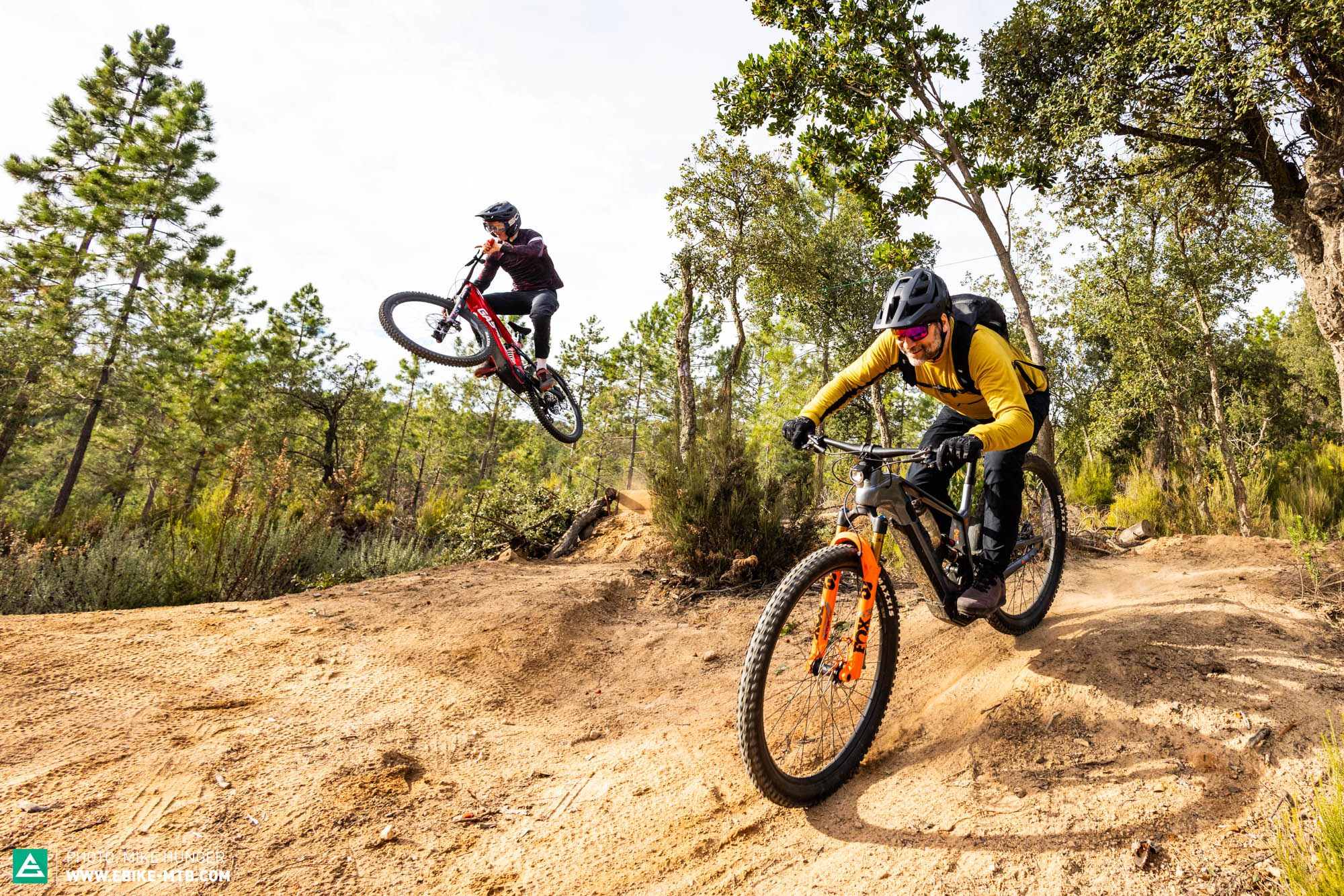
Spoilt for choice: modular battery concepts for e-mountainbikes?
The battery arms race is slowly fading away. With the ever-growing range anxiety pushing customers towards bikes with larger batteries, the bike industry responded, providing their bikes with increasingly bigger batteries and telling end consumers that big batteries are essential to the riding experience, adding more fuel to the fire. We’ve been pushing manufacturers to rethink their strategies over the past few years, and now many of them have finally recognised that there are other factors that are far more crucial when buying a new eMTB: the buyer’s individual needs and a suitable, coherent overall concept. The test field of our 2024 eMTB comparison test still includes some bikes with massive batteries, like the Canyon Torque:ON and ROTWILD R.X1000 ULTRA, which come equipped with 900 Wh and 960 Wh batteries, respectively. However, modular battery concepts are gaining the upper hand. The reason for this is that some manufacturers allow you to choose from different battery configurations at the time of purchase, and/or to expand the main battery with a range extender. And while a lighter bike should generally have better handling qualities, that’s not always the case in real life. Instead, this means that you can simply plug in a range extender to bolt on some extra fun – practical!
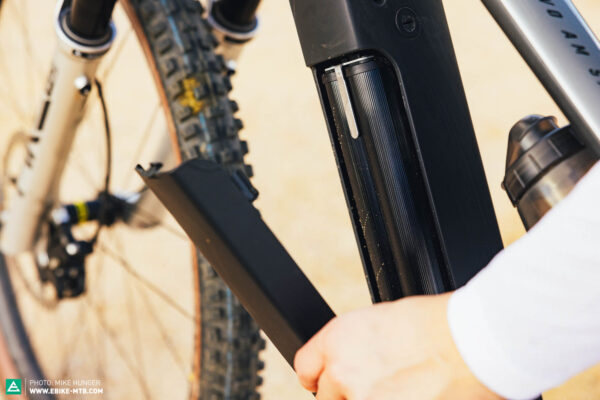
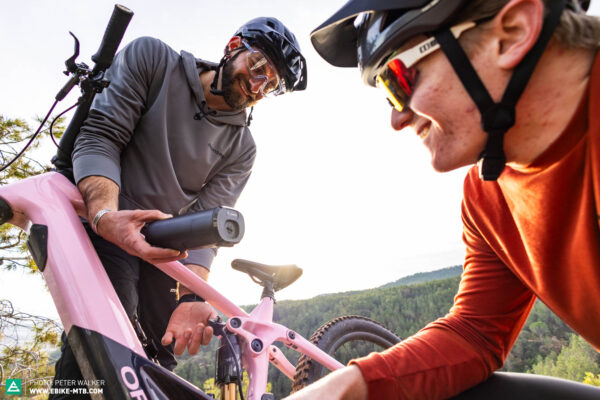
The range of e-bike motors is wider than ever!
There isn’t such a thing as the best ebike motor ever. Rather, the range of motor systems is wider than ever: from small, almost invisible motors with light or medium assistance to powerhouse beasts, the choice is huge. Motor manufacturers are pursuing a wide variety of approaches. For example, you can get a discrete, almost invisible TQ-HPR50 drive, which impresses with a particularly natural ride feeling, or a powerful Bosch Performance Line CX. And then there are new concepts too, like the Bosch Performance SX motor, which blurs the lines between light ebikes and full-power eMTBs. There are also some fresh, innovative players in the market, like Pinion with their new MGU E1.12 motor/gearbox unit, which aims to minimise maintenance. It’s also important to consider the ecosystem of extra features around the motor itself – many motor systems are complemented with practical features that make them more pleasant to use, e.g. navigation functions and theft protection, like Bosch’s eBike Lock, which shuts down the motor functions.
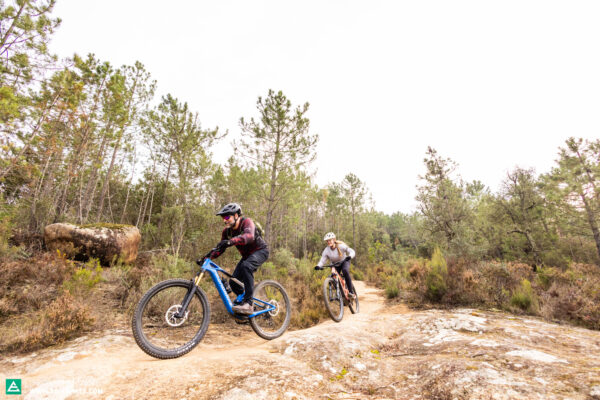
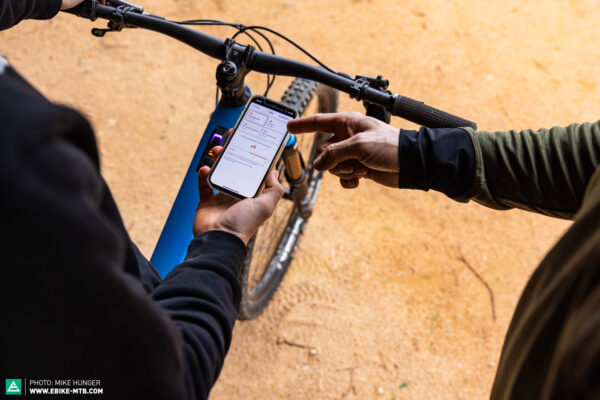
Old-school vs. new-school – clever gears on ebikes
Are cable-operated rear derailleurs a thing of the past in the high-end market? As recently as last year, many top-spec bikes still had a mechanical derailleur. In this year’s e-mountainbike test, however, it’s only 22% of the test field, while the remaining 78% comes equipped with an electronic drivetrain. These offer far more precise shifting, while at the same time ensuring a cleaner overall look. Above all, however, they enable manufacturers to implement additional functions that wouldn’t be possible with cable-operated drivetrains. With their Eagle Powertrain motor, SRAM enable automatic shifting through the Auto-Shift function, and also allow you to shift without having to pedal. Shimano also played a pioneering role with this kind of technology, and are following a similar path, offering the same features with their EP801 motor and electronic XT Di2 drivetrain. That’s a big step into the future of e-bikes, even though the new shifting features currently only bring advantages on leisurely tours. In complex Trail scenarios, on the other hand, automatic shifting quickly reaches its limits, as the shifting algorithm often doesn’t have enough time to shift into a suitable gear. With their MGU E1.12 motor-gearbox unit, Pinion offer a huge range of useful functions. The Start.Shift and Pre.Shift function allow you to select a suitable starting gear via the app, while a semi-automatic function selects a suitable gear for a set pedalling cadence.
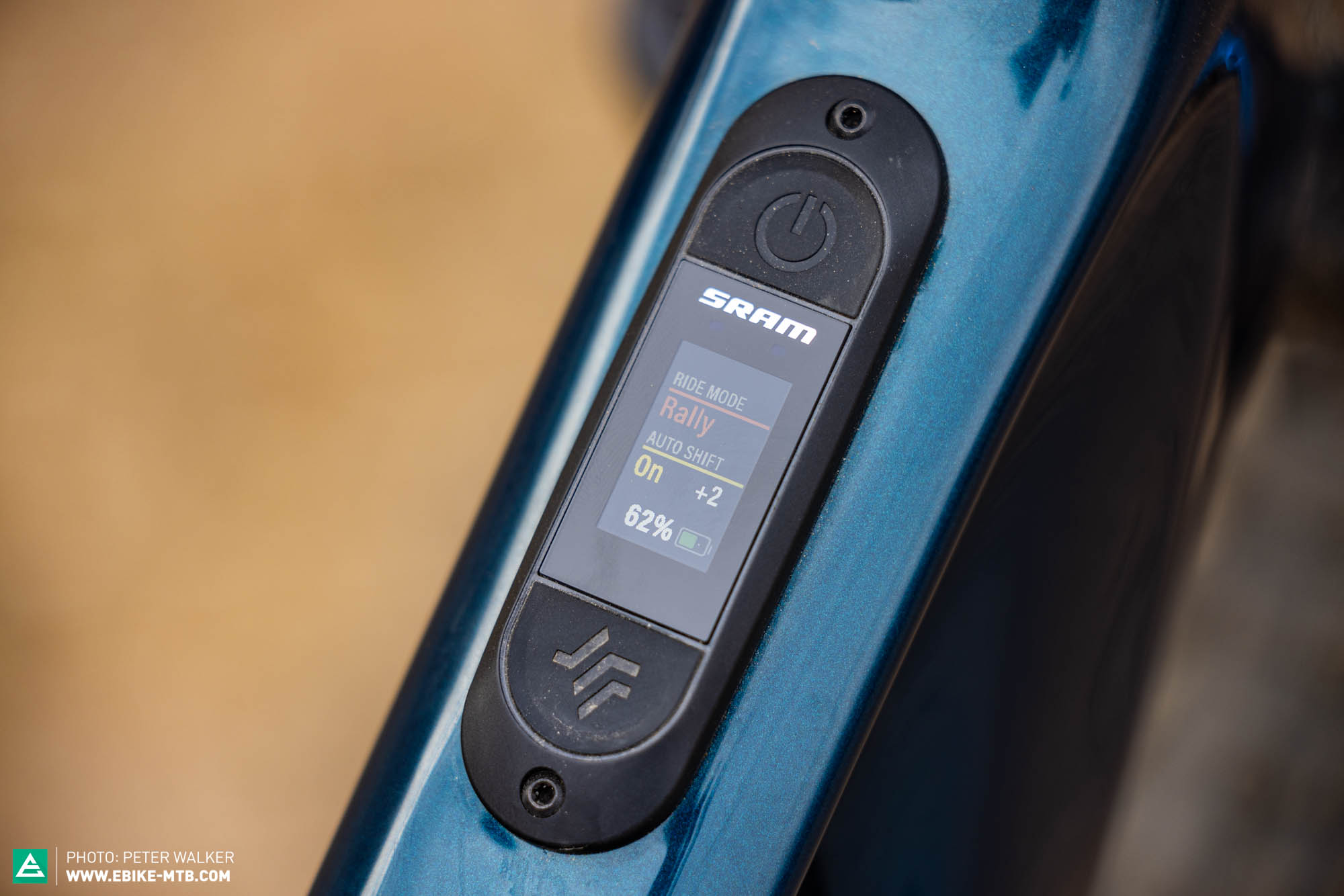
Lighter, faster, stronger? The development of weight in e-mountainbikes
Weight is still one of the hottest topics in e-mountainbiking. Over the last few years, weight has been steadily rising due to increasing battery sizes. This year, four of our competitors weigh over 25 kg. However, the trend is beginning to reverse – the average weight has fallen by 0.2 kg compared to last year’s test. The reason for this is that battery capacity has levelled off between 600 Wh and 800 Wh. While in our last major eMTB comparison test, the average battery capacity was still around 630 Wh, this year it has dropped to 600 Wh. In addition, constant technological developments are enabling manufacturers to use lighter motor components without sacrificing performance. Many modern e-mountainbikes come with a carbon frame. While in our 2023 eMTB group test, 4 competitors still relied on an alloy frame, this year it was just 2 out of 27 bikes, the FOCUS SAM² 6.9 and Moustache Samedi 29 Game 11 FOX. At 27.1 kg, the FOCUS is the heaviest bike in test, while the Moustache tips the scales at 24.6 kg, weighing less than some of the carbon eMTBs in the test field. The advantages of carbon are obvious: it allows manufacturers to build lighter, stiffer bikes and gives them more freedom with frame designs. In terms of sustainability and environment, however, carbon still splits opinions. When it comes to riding performance, weight must always be considered in the context of the overall concept. The weight of an e-MTB cannot be determined by individual points, as a range of different factors can add up to influence the weight and ride quality.

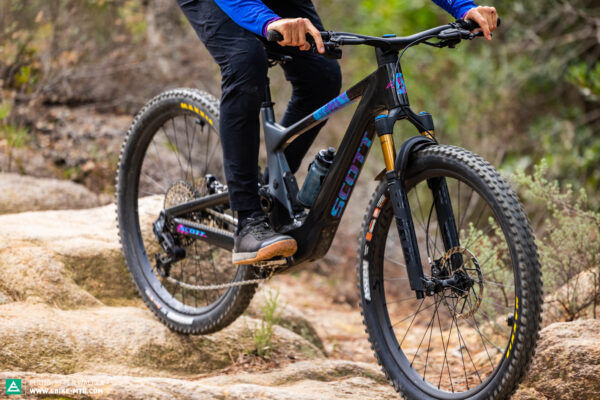
Mechanicals, bad luck and breakdowns – Why are so many e-mountainbikes breaking down?
Manufacturers still have lots of work to do. While it’s true that eMTBs are significantly more complex than analogue MTBs and have considerably more components, there’s still a lot of room for improvement in terms of durability and spec next to analogue MTBs. Although we experienced fewer breakdowns than last year’s eMTB group test, we had our fair share of issues this year: from broken lights, cracked motor covers, loose spokes and broken cranks, to batteries that refused to charge and bikes that wouldn’t even start. Some bikes robbed us of a good night’s sleep, keeping us in the workshop deep into the night after a long day of testing to get them up and running again for the next day. Nobody wants to do that! Once again this year, we realised that many components aren’t robust enough, and that some manufacturers don’t care too much about quality control – and in some cases, that the bike’s haven’t even finished development yet. Who wants to spend the evening faffing around with their bike rather than enjoying a pizza and pint with their mates, especially on a hard-earned holiday?
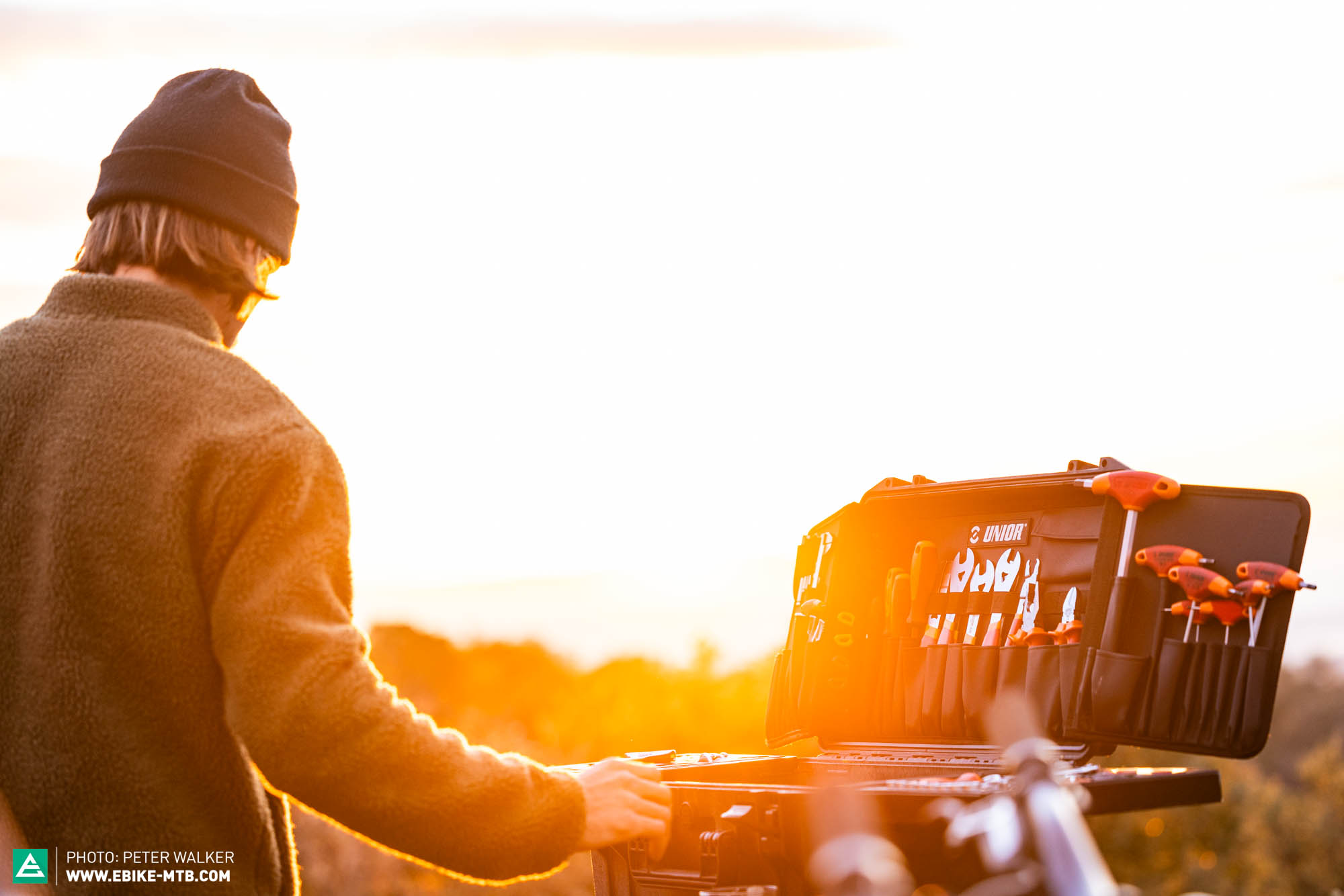
EMTBs are more diverse than ever, and the differences are bigger than ever too. Whether you’re a mean trail shredder or a leisurely tourer, in this day and age everyone can find the right eMTB. Bikes are getting smarter, incorporating clever features like automatic shifting functions. At the same time, modular battery concepts allow you to customise your bike to suit the way you ride. However, alongside some incredible eMTBs, there are some bikes that fail to deliver the performance they (and their price tag) promise! There are still major flaws in terms of both component choice and the reliability of the motor systems.
Did you enjoy this article? If so, we would be stoked if you decide to support us with a monthly contribution. By becoming a supporter of E-MOUNTAINBIKE, you will help secure a sustainable future for high-quality cycling journalism. Click here to learn more.
Words: Mike Hunger Photos: Mike Hunger, Peter Walker









